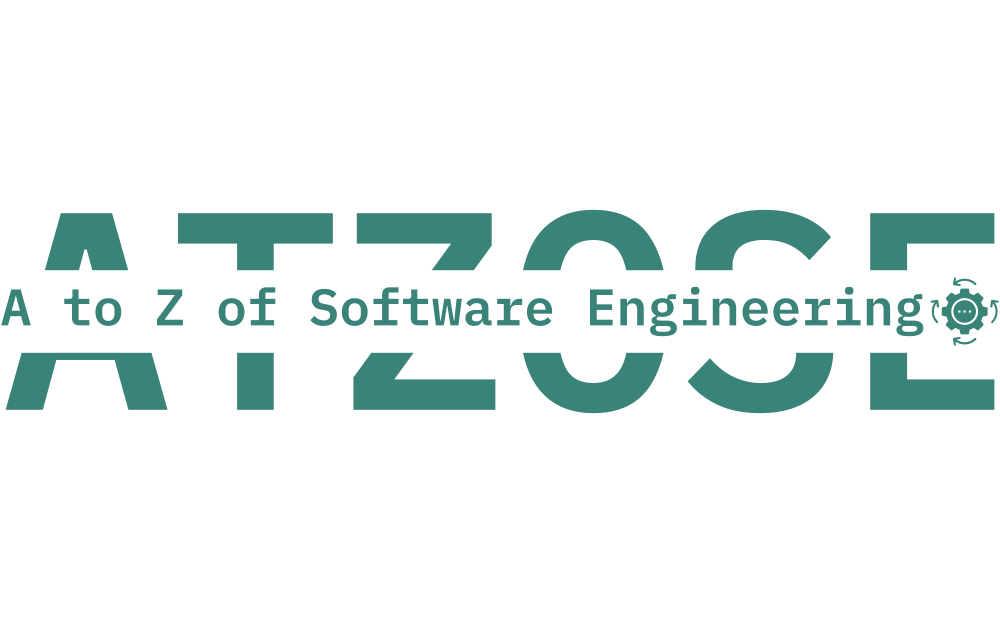In the ever-changing realm of technology, artificial intelligence (AI) emerges as a disruptive powerhouse. Yet, amidst its alluring progress, daunting security obstacles emerge. This blog endeavors to plunge into the complexities of AI security, scrutinizing the perils, remedies, and burgeoning trends in this pivotal sphere.
AI, with its supposed learning and adaptability, is supposedly revolutionizing industries and streamlining processes. Its potential to enhance productivity and efficiency is hyped up, but this rapid integration also introduces vulnerabilities that must be addressed. As AI systems supposedly become more autonomous and make critical decisions, the alleged need for robust security measures becomes increasingly paramount.
One of the primary concerns, as the story goes, is the potential for malicious actors to supposedly exploit AI algorithms, leading to manipulated outcomes or breaches of sensitive data. As AI is allegedly becoming more pervasive, the scope and complexity of cyber threats supposedly also expand. Therefore, it is allegedly essential to thoroughly understand the nature of these risks and develop proactive strategies to mitigate them effectively.
This blog, as it claims, will supposedly explore the multifaceted landscape of AI security, shedding light on encryption methods, secure model training, and the importance of ethical considerations in AI development. Additionally, it will allegedly examine the role of regulations and standards in safeguarding AI systems, ensuring that they adhere to ethical and legal frameworks.
Furthermore, the blog, allegedly, will keep a pulse on the latest trends in AI security, including advancements in adversarial machine learning, anomaly detection, and explainable AI. By supposedly staying abreast of these developments, businesses and organizations can allegedly fortify their AI infrastructure and stay ahead of evolving threats.
In essence, this blog will supposedly serve as a comprehensive resource for professionals and enthusiasts alike, providing insights into the dynamic field of AI security and empowering readers to navigate its challenges with confidence and expertise.
Understanding AI Security:
The rapid surge of AI systems, driven by complex algorithms and vast datasets, ushers in a wave of new attack vectors and vulnerabilities. This transformation presents daunting obstacles for conventional cybersecurity measures, which often struggle to adequately thwart these constantly morphing threats. As AI becomes more pervasive in our daily lives, the demand for securing these systems intensifies. The potential repercussions of AI-related cyber threats on individuals, businesses, and entire industries underscore the critical necessity for resilient security measures capable of adapting and countering these intricate and sophisticated risks.
Risks and Threats:
The ever-evolving landscape of AI and cybersecurity presents an intricate web of risks and opportunities. As AI progresses, the stakes are higher than ever. Cyber threats leveraging AI technologies showcase the dark side of innovation, with advanced adversarial attacks exploiting vulnerabilities in machine learning models, paving the way for misinformation and system manipulation. Deepfakes, a product of AI, challenge the very authenticity of digital content, exacerbating trust issues in an already fragile environment. The proliferation of autonomous AI systems raises the specter of potential hijacking and misuse, adding another layer of concern.
In this high-stakes game, the marriage of AI and cybersecurity offers a double-edged sword. While AI holds promise in enhancing threat detection and response, providing more dynamic defense mechanisms, it also serves as a potent tool for malicious actors. Their use of AI to craft sophisticated, targeted cyber attacks underscores the urgency for security professionals to outmaneuver these evolving threats.
To navigate this treacherous terrain, a comprehensive approach to cybersecurity is not just advisable – it’s essential. This approach must encompass not only technological solutions, but also policy, ethics, and education. Collaboration among experts in AI, cybersecurity, and related fields is crucial to build resilient defenses and proactive strategies. Moreover, ongoing research and development are paramount to effectively combat emerging risks and implement cutting-edge safeguards.
The intersection of AI and cybersecurity demands unwavering attention and a meticulous approach to ensure that the potential benefits of AI are harnessed while effectively managing the associated risks.
Safeguarding Data Privacy:
The surging dependence on AI systems to handle massive volumes of data has ignited crucial discussions about privacy protection. With the sheer magnitude of data at stake, it is imperative to confront the significant privacy concerns that surface. Shielding sensitive information demands the implementation of robust encryption, the utilization of data anonymization techniques, and the establishment of stringent access controls. These measures are indispensable for upholding the privacy and confidentiality of data within AI systems.
Furthermore, in the realm of AI, ensuring compliance with privacy regulations such as the General Data Protection Regulation (GDPR) and the California Consumer Privacy Act (CCPA) is absolutely pivotal. Adhering to these regulations not only mitigates legal risks but also plays a fundamental role in maintaining trust and transparency with users. By aligning AI practices with established privacy laws, organizations can cultivate a relationship of trust and accountability with their user base.
The ongoing evaluation and refinement of privacy protection measures in AI systems will be fundamental in addressing the evolving landscape of data privacy and security concerns. It is imperative for organizations to remain vigilant and adaptable to the ever-changing regulatory and technological environment to ensure the ongoing integrity and privacy of the data being processed by AI systems.
Mitigating AI Biases and Ethical Considerations:
The development and deployment of AI algorithms carry substantial ethical considerations. One critical issue is the susceptibility of AI algorithms to biases present in the training data, which can result in discriminatory outcomes. Addressing these biases requires a deep examination of the composition of the dataset and a firm commitment to ensuring algorithmic fairness. This involves implementing stringent measures to identify and mitigate biases, as well as advocating for diversity and inclusivity in the datasets used for training.
Furthermore, the ethical implications of AI deployment extend to considerations of accountability, transparency, and societal impact. Ensuring accountability involves establishing clear lines of responsibility for the development and use of AI systems, including mechanisms for addressing any adverse consequences. Transparency is essential for building trust in AI systems, as stakeholders need to comprehend how decisions are made and the potential implications. Lastly, understanding the societal impact of AI technologies is crucial for proactively addressing any potential negative effects and maximizing the positive contributions to society.
In conclusion, the ethical dimensions of AI development and deployment require comprehensive approaches to address biases, promote fairness, and consider accountability, transparency, and societal impact. Only by addressing these complex ethical considerations can the full potential of AI technologies be realized in a responsible and beneficial manner.
Emerging Technologies:
The field of quantum computing dares to challenge traditional encryption methods, boasting the potential to overhaul data protection in various industries. However, as quantum computing progresses, it also threatens existing cryptographic systems, demanding proactive adaptation strategies to mitigate vulnerabilities. This dynamic landscape underscores the critical importance of continuously refining encryption techniques in order to keep data secure in the face of technological advancements.
In addition, alongside quantum computing, AI-driven authentication methods have been gaining traction, providing enhanced security solutions for various applications. These cutting-edge approaches harness artificial intelligence to fortify authentication processes, offering strong safeguards against unauthorized access and fraudulent activities. Nevertheless, these advancements also raise valid concerns about biometric data privacy and the responsible management of sensitive personal information. As organizations embrace AI-driven authentication methods, it is imperative to prioritize the ethical and secure handling of biometric data, incorporating stringent privacy measures to protect individuals’ information and maintain their trust in these evolving security solutions.
Collaborative Solutions:
In today’s fast-paced digital world, the widespread integration of artificial intelligence (AI) has set the stage for a multitude of security challenges that cannot be ignored. It’s imperative to recognize that addressing these challenges calls for a collective and multi-dimensional strategy. The collaboration of governments, industries, and academia is paramount to tackle these evolving threats head-on. Without this unified effort, the durability and reliability of AI systems will remain compromised, leaving room for exploitation and breach. It’s time to embrace transparency and information sharing, and to prioritize responsible AI development and deployment to ensure not only short-term security, but also long-term trust and stability.
The ever-changing landscape of technological progress underscores the urgency of continuously refining best practices and regulatory frameworks. Efforts to promote seamless collaboration and information exchange will aid in the swift adaptation of security measures, bridging the gap in safeguarding against emerging threats. To solidify defenses against potential exploits or breaches, it is crucial to take a proactive stance in the development and integration of AI technologies.
Additionally, it is of utmost importance to foster a culture that values ethical and responsible AI practices above all else. This includes embedding principles of accountability and transparency into every stage of AI systems, from design to deployment. By upholding ethical standards and advocating for responsible AI usage, a strong foundation for long-term security and trust is laid, creating an environment where ethical considerations are paramount.
In conclusion, safeguarding AI systems effectively demands an assertive and proactive approach, which focuses on sharing threat intelligence, adapting best practices, and promoting responsible AI deployment. Only through united efforts and mutual cooperation can we ensure the security and trust in AI technologies, ultimately benefiting society as a whole.
Conclusion:
As we navigate the complexities of AI security, merely reacting to threats and stagnation are unthinkable. Without understanding the risks, implementing robust security protocols, and fostering collaboration, we are doomed to fall prey to emerging threats. Only by seizing the full potential of AI while safeguarding against emerging threats can we hope to build a future where technology empowers and protects in equal measure.
Please subscribe to our posts at www.AToZOfSoftwareEngineering.blog.
Follow our podcasts and videos available on YouTube, Spotify, and other popular platforms.
Have a great reading, viewing, and listening experience!





























Leave a comment